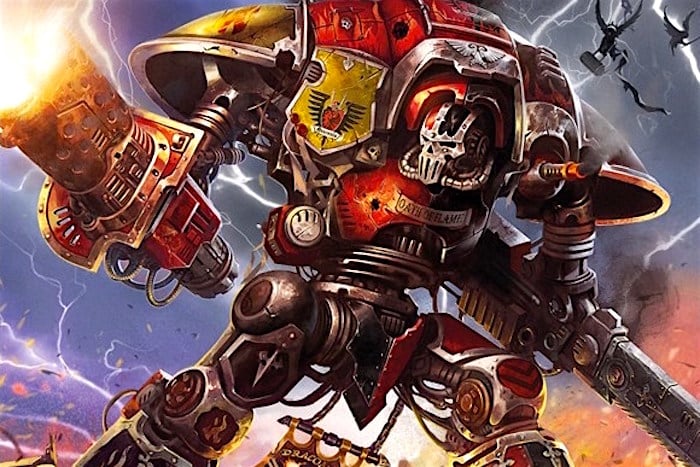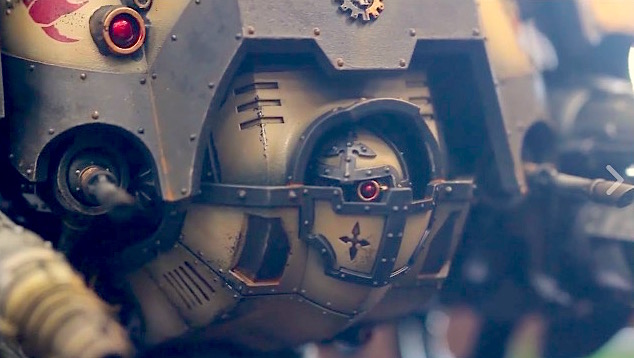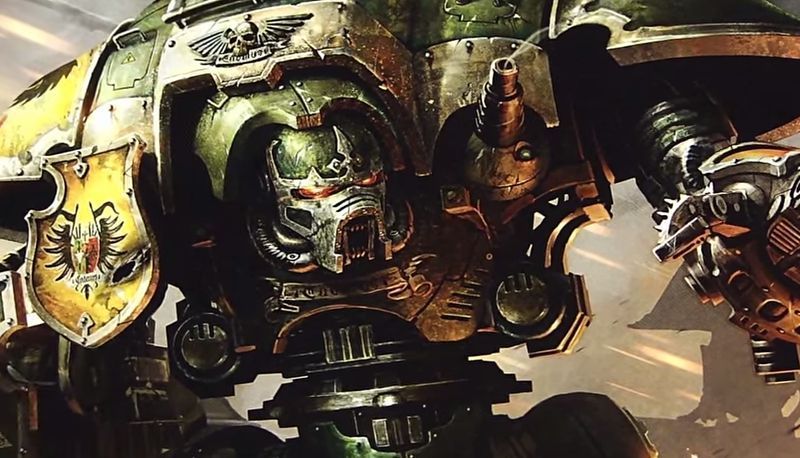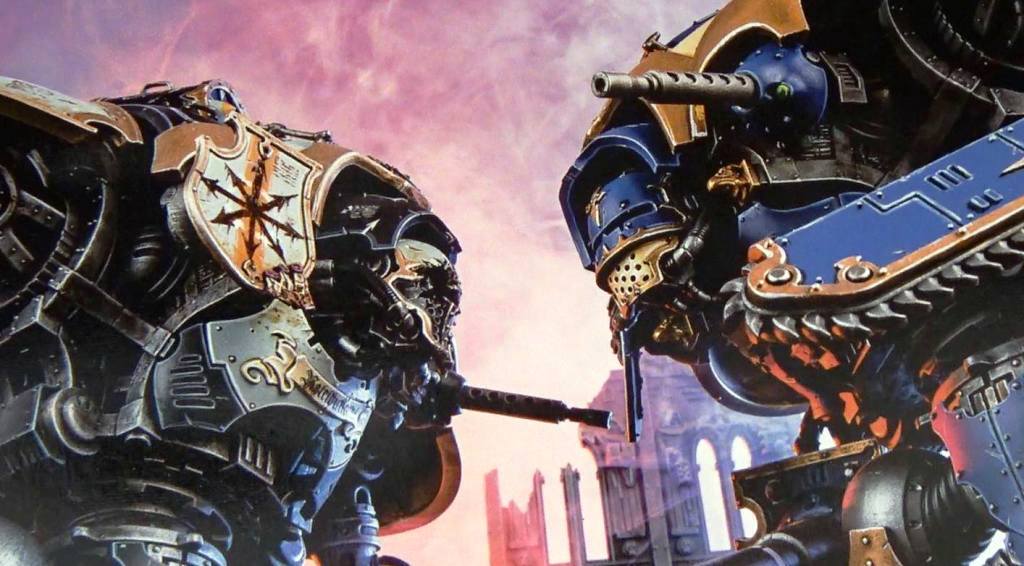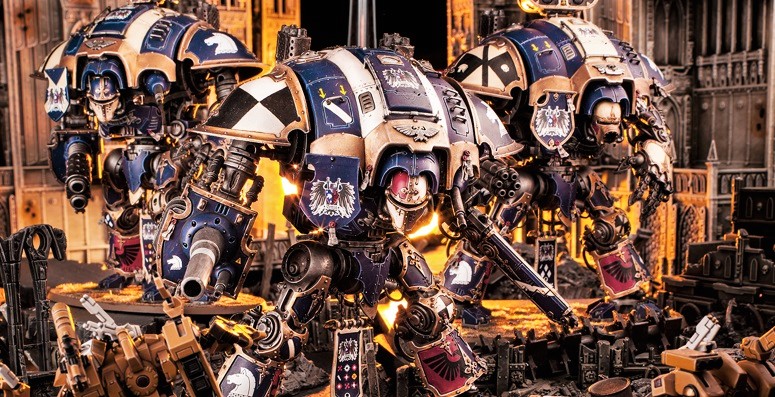40K Lore: On Knights And Knobility
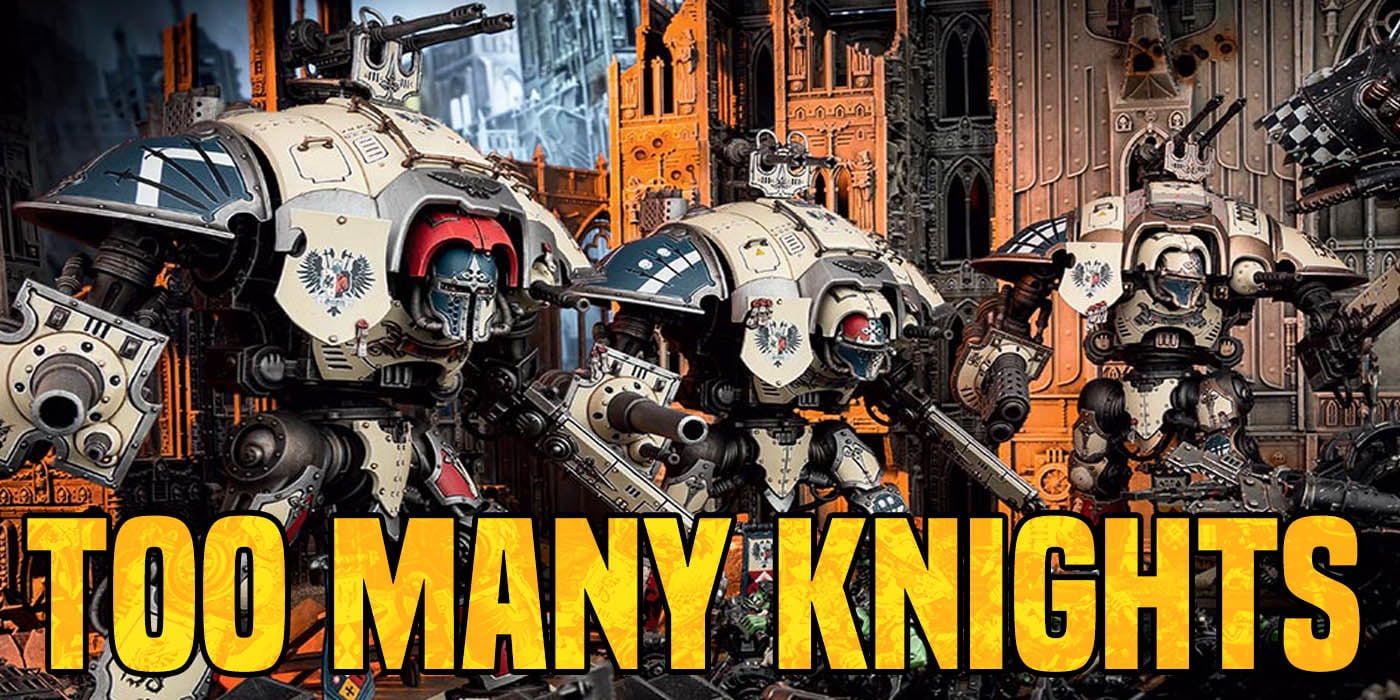

Imperial Knights or the Questor Imperialis are some of the most advanced pieces of technology known to the Imperium. They embody the spirit of the Adeptus Mechanicus and the might of humanity–truly they are exemplars of man and machine fused in beautiful harmony.
Today, Loremasters, we are fortunate in that we get to see firsthand how knowledge is power. Be wary though, for knowledge can also lead to heresy, and power corrupts–so the mind must be kept vigilant and only the right knowledge consumed. Fortunately, the tech-priests of the Adeptus Mechanicus are seldom (if ever) wrong, so the information contained herein should be safe enough. It’s probably best to report to your commissar just the same, especially if you feel you might be prone to psychic episodes or heresy.
But enough forewarning, let us get to the meat of our discussion, an ironic phrase because mostly we are discussing ways that frail weak flesh can be improved. One such method is to utterly ensconce the fragile human body within the armored husk of a powerful Imperial Knight. If you have only heard legends of these machines–Imperial Knights are smaller, one-man versions of Imperial Titans. Knights are smaller than Warhound Scout Titans, and can only mount one Titan-class weapon. But though they can mount only one massive weapon, there is much variety within that option: everything can fit on a Knight chassis, from Vulcan Mega-bolters to Volcano cannons. Knights themselves are operated from Knightly Houses located on Knight Worlds. Pilots of Knights are known as Knight Scions.
But where do these Knights come from? Why are they sown throughout the Imperium? What purpose do the Questors Imperialis actually serve?
They are some of the oldest saviours of mankind in Imperial history. They represent the loving mechadendrites of the Mechanicum stretching out through the galaxy to bring wisdom, knowledge, light, reason, and cybernetic servitude upgrades to all humanity.
During the Age of Strife, the Priests of Mars sent out many expeditions of spacecraft, hoping to find remnants of human knowledge on other worlds. They found an anarchic galaxy where the ancient confederacy of interdependent human planets no longer existed. The human worlds discovered retained little of their old technology. They had devolved into feudal states ruled by aristocratic nobles who welcomed the Techpriests as long-awaited saviours. The Tech-priests settled among these feudal empires, or Knight Worlds, choosing planets that were mineral rich where they could rebuild their industries. They established contacts with the Knights, trading with their worlds and investigating the ancient ruins where surviving technology could still sometimes be found. The Knights provided manpower and security against enemies such as marauding Orks and land-hungry Eldar Exodites. In return the Tech-priests provided technical expertise and help rebuilding their planets.
Over the millennia the Forge Worlds became powerful and the Knight Worlds flourished under their wing. The Tech-priests and Knights became mutually dependent and each Forge World became the hub of an empire consisting of a Forge World and its surrounding Knight Worlds. The Knights learned much from the Tech-priests and their societies were gradually transformed into technically sophisticated cultures. Many of the Forge Worlds managed to maintain sporadic contact with each other, and the Tech-priests’ obsession with knowledge ensured that discoveries on one world were distributed to others throughout the galaxy.
The Knight Worlds operate under a strict feudal system and are typically sworn to either the Adeptus Terra or Adeptus Mechanicus. Each world is led by either a single or number of Knight Houses, whose ranks are made up of Nobles which pilot Knight suits into battle.
Of course there is also a sub-class called Drovers who look after animal herds using walkers similar to those of their masters, but, by law, Drover walkers are not armed with any weapons, despite the fact that they face very serious threats in the form of predators and xenos raids. This forces encourages the Drovers to rely on the Knights for protection, and creates a dependency comfortable for the nobles, making revolt virtually impossible.
In addition to the threat presented by hostile Houses, Knights had to conduct frequent battles against their worlds’ indigenous predators. Hunting these beasts honed their martial skills into a deadly art. The Knights themselves would retire when they reached old age, passing their Battle Armour down to their heir, and in its stead donning the armour of a Knight Warden. They would then take the task of protecting the household and lending its members their advice. Knights formed family units to fight with the Titan Legions or alongside the Imperial Guard. Knights of a given house would be led by a noble holding the rank of a Lord, or the corresponding title of a Seneschal if he happened to be a Warden.
That’s the history–but let us speak now of the armor itself. Consider the Imperial Knight–you can find a variety of forms, but by far the two most common types are the Knight Paladin and Knight Errant. These both use the same basic body form but are fitted with different weapons arrays. However all Imperial Knights are protected by thick adamantium armor and potent field generators called Ion Shields.
Other, much rarer, types of Knight armour are used on some Knight worlds. Amongst the heaviest types of Knight armour made by the forge worlds are the Crusader and the Castellan. Although slower than other suit types, these two benefit from substantially increased firepower and much thicker armour, and are instead used in a fire support role. The Lancer is a faster version of a standard Knight suit. These agile machines are used to outflank the enemy, scout out their defences and distract hostile forces while slower units get into position to attack. This type of armour is sophisticated and extremely difficult to manufacture, and its use is therefore usually reserved for rulers of knightly houses, or for Nobles that have proven themselves worthy of it in the fires of victory. However, while the Crusader, Castellan and Lancer are rightly revered, the Paladin and Errant’s perfectly balanced combination of speed, firepower and armour make them the supreme examples of Knight design.
And of course there’s also the lesser Armiger, which is smaller than its cousins and crewed by aspiring nobles, low-born commoners with a knack for war, or even the bastard children of Barons and High Kings. In battle the Armigers fight at the flanks of their larger kin, like packs of hounds hunting with their medieval lords
The existence of the Armigers proves that anyone can be of service, if given the right knowledge–and a suit of nigh-indestructable armor that carries weapons capable of blasting through a Greater Daemon.
Until next time, Loremasters, remember that Humanity endured the long darkness of separation from the Emperor thanks to these Quaestors, which is why when we lie down for sleep when the sun (or light of reason) sets, and darkness reigns, we say “good knight” to one another.

